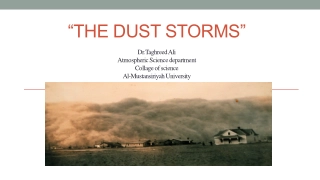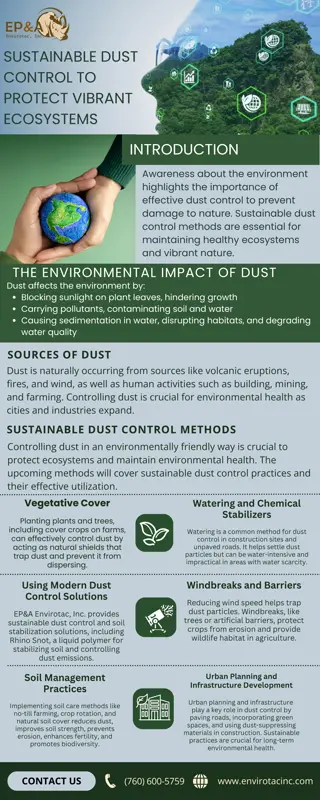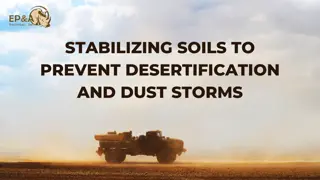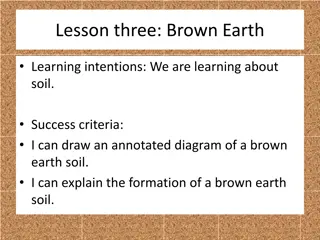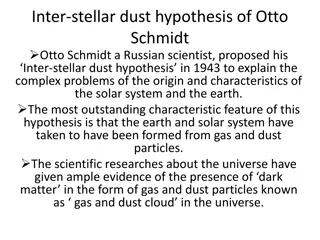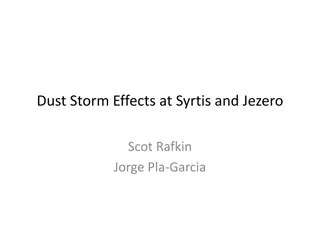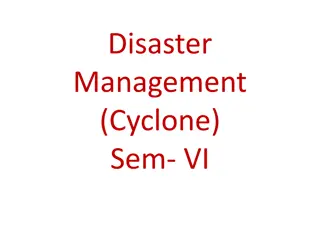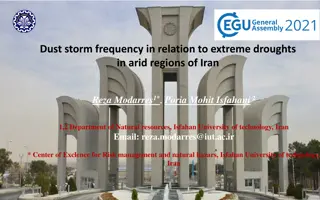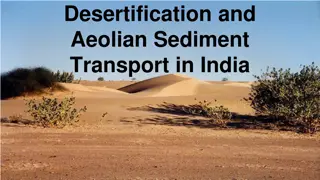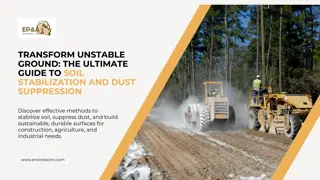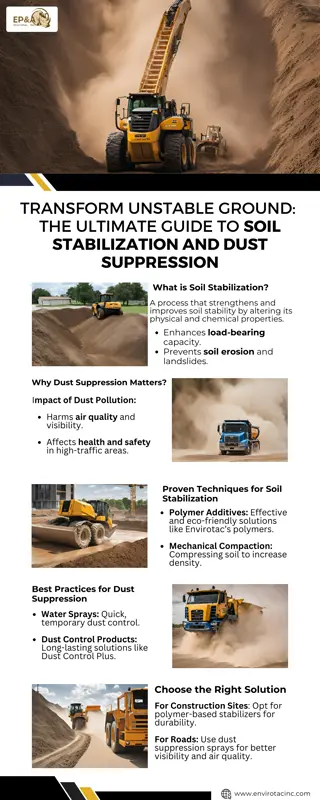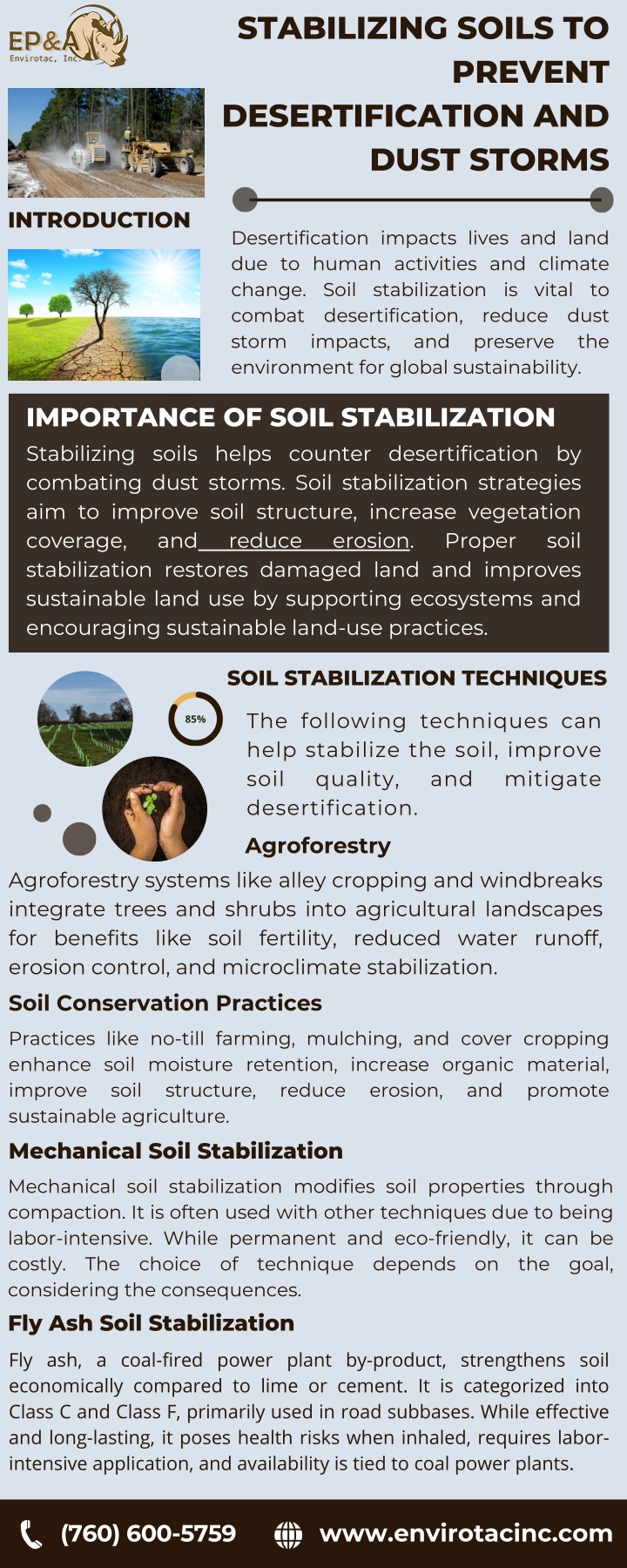
Stabilizing soils to prevent desertification and dust storms
Desertification impacts lives and land due to human activities and climate change. Soil stabilization is vital to combat desertification, reduce dust storm impacts, and preserve the environment for global sustainability.n
Download Presentation

Please find below an Image/Link to download the presentation.
The content on the website is provided AS IS for your information and personal use only. It may not be sold, licensed, or shared on other websites without obtaining consent from the author. If you encounter any issues during the download, it is possible that the publisher has removed the file from their server.
You are allowed to download the files provided on this website for personal or commercial use, subject to the condition that they are used lawfully. All files are the property of their respective owners.
The content on the website is provided AS IS for your information and personal use only. It may not be sold, licensed, or shared on other websites without obtaining consent from the author.
E N D
Presentation Transcript
STABILIZING SOILS TO PREVENT DESERTIFICATION AND DUST STORMS INTRODUCTION Desertification impacts lives and land due to human activities and climate change. Soil stabilization is vital to combat desertification, reduce dust storm impacts, and environment for global sustainability. preserve the IMPORTANCE OF SOIL STABILIZATION Stabilizing soils helps counter desertification by combating dust storms. Soil stabilization strategies aim to improve soil structure, increase vegetation coverage, and reduce stabilization restores damaged land and improves sustainable land use by supporting ecosystems and encouraging sustainable land-use practices. erosion. Proper soil SOIL STABILIZATION TECHNIQUES The following techniques can help stabilize the soil, improve soil quality, desertification. 85% and mitigate Agroforestry Agroforestry systems like alley cropping and windbreaks integrate trees and shrubs into agricultural landscapes for benefits like soil fertility, reduced water runoff, erosion control, and microclimate stabilization. Soil Conservation Practices Practices like no-till farming, mulching, and cover cropping enhance soil moisture retention, increase organic material, improve soil structure, reduce sustainable agriculture. Mechanical Soil Stabilization erosion, and promote Mechanical soil stabilization modifies soil properties through compaction. It is often used with other techniques due to being labor-intensive. While permanent and eco-friendly, it can be costly. The choice of technique depends on the goal, considering the consequences. Fly Ash Soil Stabilization Fly ash, a coal-fired power plant by-product, strengthens soil economically compared to lime or cement. It is categorized into Class C and Class F, primarily used in road subbases. While effective and long-lasting, it poses health risks when inhaled, requires labor- intensive application, and availability is tied to coal power plants. www.envirotacinc.com (760) 600-5759

